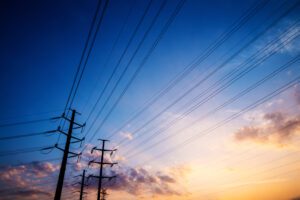California in the United States is often viewed as the place where innovation starts. When it comes to port and environmental actions, once again, California has been a pioneer. Last month, events showed that it takes it role as an innovation leader seriously.
When it comes to pollution of ships in ports, California decided several years ago before any other state to mandate shore side electricity to ships that seeks to cut the majority of their emissions while in ports. On May 6 of this year, the Port of Long Beach held a workshop dedicated to this topic, and once again reaffirmed the deadline for coming regulations. The requirement, going into effect Jan. 1, 2014, is that 50 percent of a fleet’s vessel calls plug in shore power. The requirements increase to 70 percent in 2017 and 80 percent in 2020. Certain berths that received special state funding will have higher requirements. Fleets that fail to meet requirements will be penalized by the California Air Resources Board.
Last month, California also hosted the International Association of Ports and Harbors (IAPH) conference. Also referred to as the World Port Summit, about 300 ports industry leaders gathered under the theme “Working on Today, focusing on tomorrow” to discuss critical issues faced by the maritime community under. With such a title, it was not surprising that Port of Los Angeles welcomed this global event. Environmental considerations were of course part of the debate. Los Angeles port took advantage of the opportunity to provide the results of their Clean Air Actions plan, which has made shore connection key element, but they also announced their new ambition: Set up a Zero Emissions Plan.
Last but not least, last April Long Beach welcomed all worldwide shore connections experts in order to move the standardization forward. P2S Engineering hosted the workshop and work concentrated on the second part of the Shore Connection standard which relates to communication protocol between shore and ships. The first part of this standard, published in July 2012 – IEC/ISO/IEEE 80005-1 Ed.1: Utility connections in port – Part 1: High Voltage Shore Connection (HVSC) Systems, describes the general requirements for HV Shore connection systems.
The standard IEC/ISO/IEEE 80005-1,2 are developed jointly between:
• IEC technical committee TC18: Electrical installations of ships and of mobile and offshore units,
• ISO technical committee of TC8: Ships and Marine Technology Subcommittee SC 3, Piping and Machinery,
• IEEE PCIC Marine Industry Subcommittee.
The aim of the standard is to define:
• Requirements for Shore connection design and construction,
• Requirements to guarantee the safety of high-voltage shore connection,
• Requirements for compliance between ships and high-voltage shore connection.
With the cooperation between ships and terminal facilities and with appropriate operating procedures this standard provides the benefits of standard, straightforward connection without the need for adaptation and adjustment at different locations. Ships that do not comply with the standard may find it impossible to connect to compliant shore supplies. This standard is completed by IEC 62613-1 & 2 who standardise the high-voltage plugs, socket-outlets and ship couplers for high-voltage shore connection systems
The typical shore connection architecture set out in standard IEC/ISO/IEEE 80005 1 looks like this:
- Connection to the MV Port’s internal network or to local grid
- Shoreside isolation transformer: mandatory to prevent circulation of earth fault current between several ships
- Shoreside protection relays and interlocking system
- Shore CB and earthing switch
- Shore-to-ship connection, including: HV cables and cable reels, HV plug/socket-outlets with handling facilities, communication and control wires, equipotential bonding cable, etc.
- Same as 5.
- Same as 5.
- Shipside protection relays and interlocking system
- Shipside CB and earthing switch
- Where applicable (ship voltage different from shore connection voltage), an onboard transformer is needed to adapt the high voltage supply to the ship’s main switchboard voltage; this transformer is preferably located near the main switchboard in a dedicated room
- Onboard receiving switchboard
An effective, workable shore connection standard should encompass:
• Quality of the power supply
• Electrical requirements
• Environmental and mechanical requirements
• Safety
• Electrical equipment requirements
• Ship requirements
• Compatibility between shore connection and ship equipment
• Ship-to-shore connection and interface
• Plugs and sockets
• Verification and testing.
For more details on the standard, download this white paper about Shore Connection technology. To learn more on how Schneider Electric helps the biggest Californian port to reach its green ambition visit our website.


